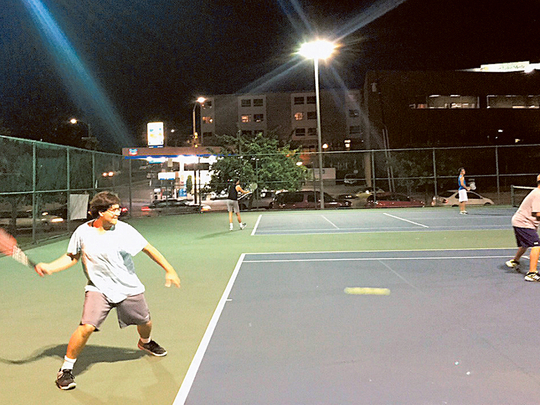
London: You probably know that exercise is good for you, but do you know whether you’re better off riding a bike or swimming laps in the pool?
Actually, if you want to get the biggest bang for your exercise buck, you should pick up a racket, new research reveals.
An analysis of more than 80,000 adults who were tracked for nearly a decade finds that those who played tennis, badminton or squash had the lowest risk of dying during the course of the study.
Compared with people who didn’t play racket sports, those who did were 47 per cent less likely to die of any cause and 56 per cent less likely to die as a result of cardiovascular disease.
If these kinds of sports aren’t your racket, you could don a swimsuit and goggles.
In the study, swimmers were 28 per cent less likely to die for any reason and 41 per cent less likely to die of cardiovascular disease than were people who stayed out of the water.
Another good alternative is to join an aerobics, Zumba or other type of active fitness class.
Those who did were 27 per cent less likely to die of any cause and 36 per cent less likely to die of cardiovascular disease during the study period than those who didn’t.
The results, published Tuesday in the British Journal of Sports Medicine, are based on data from 43,705 women and 36,601 men who participated in the Health Survey for England or the Scottish Health Survey.
These volunteers, whose average age was 52, told interviewers how often they exercised, what type of exercise they did and how intense their workouts were.
Swimming was the most popular type of exercise, claimed by 13.4 per cent of study volunteers.
Cycling was second, with 9.9 per cent of volunteers saying they rode a bike either outside or in an indoor exercise class.
Aerobics-type classes were third (6.4 per cent of people took them), followed by running or jogging (5 per cent), racket sports (3.6 per cent) and football (what they call soccer in the UK) or rubgy (3.1 per cent).
Overall, 44.3 per cent of people met minimum recommendations for some kind of physical activity.
The study authors checked to see how many of the volunteers died in subsequent years, tracking them for an average of 9.2 years.
Overall, 8,790 of the study participants died, including 1,909 who succumbed to cardiovascular disease.
The risk of death was not spread equally, the researchers found.
Compared with people who didn’t get enough exercise, those who met the minimum standards were 27 per cent less likely to die of any reason and 28 per cent less likely to die of cardiovascular disease during the course of the study.
Cyclists had a 15 per cent lower risk of death from any cause than noncyclists, but cycling didn’t have a significant effect on the risk of cardiovascular death.
Runners and joggers were no less likely than their counterparts to die of cardiovascular disease or anything else during the study period. Ditto for those who played football (soccer) or rugby.
All of the calculations were adjusted to account for each person’s age, level of education, body mass index, underlying physical and psychological health, smoking status and drinking habits.
For all six types of exercise, the median age of death from any cause was “considerably lower” for participants than for nonparticipants. (The age gap ranged from 3.6 years for aerobics to 23 years for football and rugby.) The study authors said this pattern was due to the fact that for every sport, the median age of participants was lower the median age for nonparticipants. It should not be taken as a sign that exercise “leads to earlier death,” they wrote.












